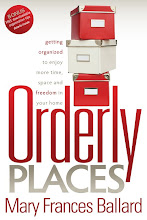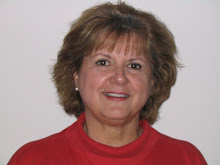In January we want to work on our
papers and home offices
- Start a container for tax related items that arrive in the mail this month.
- Update your paper and computer records by purging folders of items no longer needed. This will make planning a new budget for the year and preparing tax forms much easier.
- Shred old financial documents a little at a time or take them to a records management company to be shred professionally. If you have questions about how long you should keep some records, contact me.
- After collecting your documents for filing your taxes, you have a great opportunity to organize your reference files. These are papers usually found in your filing cabinet or boxes that you need to keep for a certain length of time but not forever. Receipts, paid bill statements, payroll stubs and financial statements are examples of these papers.
- One good rule of thumb is to permanently save the end-of-the-year statement from financial institutions and employers. But the verified monthly statements or updates for the previous year can be bundled together and kept out of the current filing system somewhere else in the house. Every year those can be replaced with the updated papers from the more recent year and then shredded. Any verification or reconciliation requiring them would normally be passed in that length of time.
- In addition, computer and/or online records are now kept by almost all institutions making it possible to track down information you may need in the future. Keeping every statement or purchase record indefinitely is not necessary and can create clutter and confusion in your paper filing system. This makes it harder to find what you really do need.
- If you have not already done so, get a new planner/calendar that shows a week at a glance and breaks each day into hourly segments. Schedule your daily activities in it. Most computers have programs to do this, as does Google and other online sources, at no additional cost.
- Update your home inventory. Take pictures or make a video of every room, every closet, the garage and attic for insurance purposes. These pictures will also give you a fresh and objective look at the appearance of you spaces
The family office or management space may be a designated room or a
corner of the dining room, family room, bedroom or in a seldom used
closet. Regardless of the space
available, some basic organizing principles need to be considered.
If no area is
available for separate office space or office furniture, consider using the
dining room or kitchen table. All of the
necessary supplies, files, etc. could be placed on rolling carts or portable
totes that are stored elsewhere. This is
not as convenient but can be a successful alternative when space is limited.
- Provide a writing surface for correspondence, writing checks and taking notes. This may be a table, a corner counter or standard style desk.
- Make provision for a computer. This could be a desktop model or laptop that takes less space.
- Label each end of cables and wires related to the computer and other electronic equipment. It will save much time in connecting or reconnecting.
- Use wire baskets that can be mounted under shelves or cable ties to contain wires.
- Consider replacing electronic items with wireless alternatives.
- Include a comfortable chair and good lighting.
- Office supplies such as paper, envelopes, paper clips, etc. can be stored in attractive containers on the writing surface if the space is large enough.
- Use drawers to contain supplies not stored on the writing surface. These may be part of the desk design or a free standing unit that is nearby or under a larger table.
- Filing supplies should be large enough to handle the family files. This may be file boxes for different categories of files, a cabinet with pull out drawers, or a rolling file trolley that can be stored in a closet when not in use. Refer to Chapter 11 for suggestions on managing papers.
- A telephone should be close at hand.
- If there is sufficient space, a bookcase for reference materials and other items is beneficial.
- If this office space is a convenient area to locate the family message center, consider placing those items in it. The best scenario would be to have them together in the most visited part of the house.
- If this space is in a more remote location, include containers for incoming and outgoing papers. This would include papers arriving from the incoming papers file box located in the more convenient place in the house.
- Regardless of its location, keep the surfaces clear before leaving it each time.
Set a goal to make this year a
successful one for organizing your home.
Every step will make it a more enjoyable place for you and your
family.


